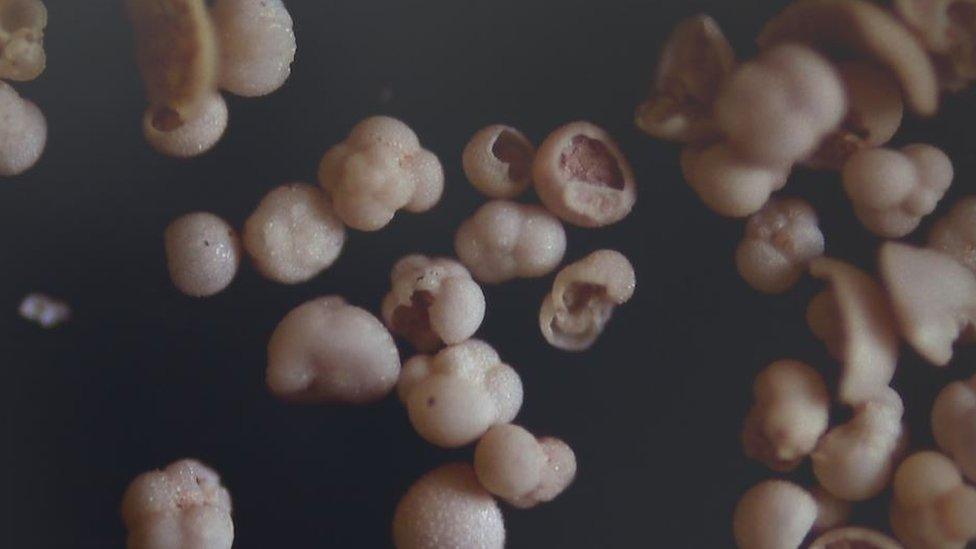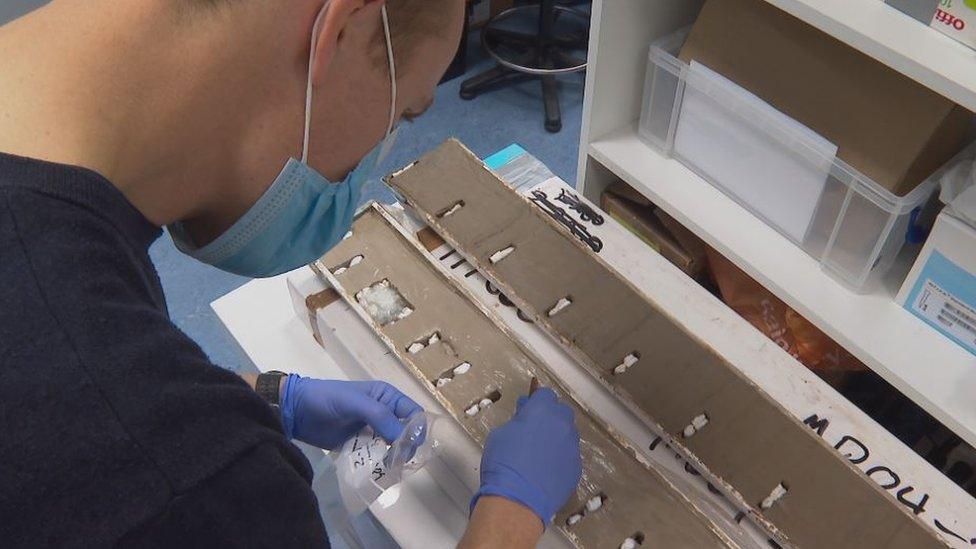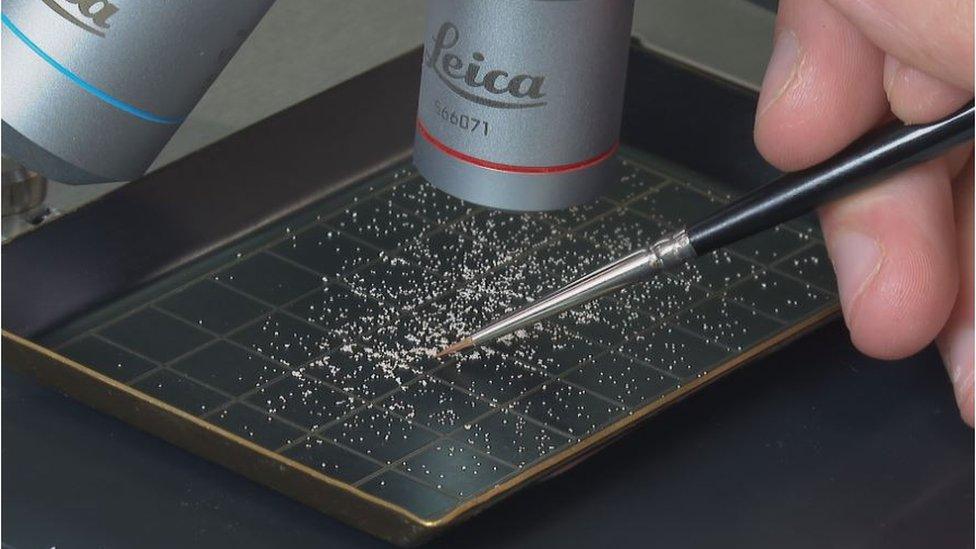Ancient shells from seabed show rising CO2 levels
- Published

Tiny shells from the seabed were analysed by the scientists to determine CO2 levels
Microscopic shells have been used by geologists at the University of St Andrews to chart the earth's climate over millions of years.
They have concluded that it is three million years since current carbon dioxide (CO2) levels were last experienced on earth.
The shells were extracted from mud samples taken from the deep ocean bed.
Experts then related the make-up of the shells with the acidity of the sea water and then atmospheric CO2 levels.
They predict that if the burning of fossil fuels continues to grow, CO2 levels within two generations will match those of around 50 million years ago when crocodiles roamed the Arctic.
Dr James Rae, co-author of the study, told BBC Scotland: "That record of CO2 changes in the past is really trying to tell us a message about where we're headed in the future.
"If we allow earth's climate system to catch up with that level of CO2, we are heading back towards worlds that haven't been experienced ever before by the human species and that really are prehistoric in terms of the climate change involved."

The shells were taken from different depths of mud samples
Greenhouse gas concentrations are the cumulative result of past and present emissions of a range of substances, including carbon dioxide, methane and nitrous oxide.
Through the Paris Agreement, countries are trying to reduce emissions of these pollutants which are generated through, for example, the burning of fossil fuels.
These greenhouse gases trap heat close to the Earth's surface, driving up temperatures. This planetary warming threatens global food supplies, makes weather events - such as tropical storms and heatwaves - more extreme and increases the risk of flooding caused by sea level rise.
In the deep ocean, the sea bed is principally created from dead marine creatures which gradually form layers over tens of millions of years.
What is climate change?
The shells looked at by the St Andrews University team were taken from different depths of mud samples, some of which were several kilometres deep.
After establishing their age, the shells were sifted from the mud and then broken down in the lab to reveal the chemical element - boron.
Research fellow Dr Hana Jurikova explained: "In this case, boron works as an indicator of ocean pH (its acidity level).
"Because the atmospheric CO2 and the ocean pH are closely coupled, knowing the ancient ocean pH enables us to understand how CO2 evolved over this time."

The shells were sifted from the mud and broken down in the lab
The geologists say their findings are the most complete history of CO2 levels over the past 66 million years.
They say the last time it was at current levels, there was much less ice on Greenland and Antarctica, driving up sea level by around 20 metres.
The findings are part of a five year project, led by the University of St Andrews, which still has three years to run.